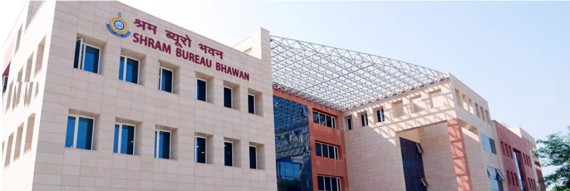Socio-Economic Surveys Of Different Segments Of Labour
Socio-Economic Survey Division
The followings surveys are conducted by socio-economic survey division:
The main objective of the survey is to make available information regarding living and working conditions of the SC / ST workers
1. Survey of Working and living conditions of Workers belonging to Scheduled Castes and Scheduled Tribes Communities in Urban Areas.
2. Survey of Working and Living Conditions of workers engaged in the unorganized sector of Industries Employment.
3. Socio-economic Conditions of Women Workers in Industry.
4. All India Survey on the Evaluation of Minimum Wages Act, 1948.
5. Quarterly Quick Employment Survey.
6. Annual Employment & Unemployment Survey.
Nine surveys each of Scheduled Castes & Scheduled Tribes category have been conducted so far and reports thereon released.
Un-organized sector Surveys aim at collecting data on the working and living conditions of workers employed in unorganized industries/ employments.
Under the unorganized sector component, 31 studies have been conducted so far and reports thereon have been released.
The main objective is to collect socio-economic data on Women workers with a view to study the problems faced by them in their working and living conditions.
Twenty two such surveys have been conducted so far and have been released.
The main objective is to evaluate the extent to which the Minimum Wages Act, 1948 is being implemented in the various scheduled employments and the problems involved therein.
So far 27 evaluation studies have been conducted under the segment.
The first quarterly quick employment survey was conducted in the month of Jan, 2009 to assess the impact of economic slowdown on employment in India for the reference period Oct-Dec, 2008
To assess the impact of economic slowdown on employment in India in selected sectors supposed to be badly affected by global economic slowdown.
The quarterly surveys are being conducted in eight selected sectors of the economy supposed to badly affected by the global economic slowdown, viz. Mining, Textiles, Leather, Metals, Automobiles, Gems & Jewellery, Transport, IT/BPO and Handloom/ Powerloom.
Twenty four such surveys have been completed so far.
The first Employment & Unemployment Survey was conducted by Labour Bureau in the year 2010 for the reference period April, 2009 to March, 2010.
The main aim of the survey is to provide information on the employment unemployment scenario in the country on regular annual basis.
The first survey was conducted in 300 districts spread across 28 States/UT of India.
The sample size in the first EUS was about 46,000 households.
The Employment & Unemployment Survey (EUS) was launched in July, 2011.
In the second survey all the districts in the 35 States/UT of the country have been covered.
The sample size in the second EUS was about 1,28,298 household schedules.
The Sample size was about 1.35 Lakh household schedules.
In the third survey all the districts in the 35 States/UTs of the country were covered.
In the fourth survey all the districts in the 36 States/UTs of the country were covered.
The Sample size was about 1.35 Lakh household schedules.
The Fifth Employment - Unemployment survey is the latest survey.
The sample size of the ongoing survey is about 1.57 lakh household schedules.
FAQs relating to Survey on Socio-Economic Conditions of Women Workers in Match Industry in the year 2014
The survey aims at collecting data on the various Socio-Economic facets of the women workers engaged in the Match Industry, in the States of Tamil Nadu and Kerala to study their ‘working and living conditions’ and ‘welfare facilities’ available to them, as against the various legislative provisions.
Two States (Tamil Nadu and Kerala)
A total of 170 employer schedules and 1255 worker level schedules have been canvassed during the survey.
Overall, women workers share 74 percent of the total workforce employed in match production in the States of Tamil Nadu and Kerala.
The average daily earnings of a women worker in matchbox filling/packing in the State of Tamil Nadu is found to be Rs 113.8/- per day whereas in Kerala, the average daily earnings of a women worker in collection of Splints is found to be Rs 336/- per day.





